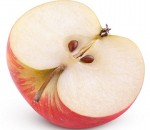How we love our sweets. From candy and chocolate to soda and baked goods, sugar is humanitys favorite thing to eat. A little sweetness occasionally can bring pleasure into our lives. But over consumption of this particular chemical is wrecking havoc on us. Lets explore why sugar may not be as sweet as we would hope.
The Evolution of Taste
First, well explore why we love sugar so much. Historically, humans had limited access to sugar, because in most climates fruit is only available for part of the year. The limited appearance of these sweet things for the few weeks they were ripe was a cause for celebration. We are hard-wired to eat as much sugar as possible when we encounter it because it is naturally so rare. And the things in nature that are naturally sweet are also full of fiber and precious nutrients.
But with modern agriculture and the mass production of sugar cane, sugar beets, and corn syrup, we can literally have sugar all the time. Most of the sugar we eat today does not have the fiber that helps slow its digestion or the nutrients that make whole fruits so valuable. We can also get fruit and juice in mass quantities any time of year in any location. And most syrups, sweeteners, and processed foods such as crackers, cookies, chips, white rice, white bread, and anything made with refined flours act like sugar in the brain and body.
Our Favorite Drug
I have heard it said that sugar is harder to stop using than cocaine. That may be because cocaine quickly and obviously destroys the body and mind, while sugar takes a lot longer and is much sneakier about it. But they both manipulate brain chemistry, and cocaine molecules only have one more atom (nitrogen) than sugar molecules.
Eating sugar causes dopamine, a feel-good chemical, to be released in the nucleus accumbens, the area of the brain associated with novelty, reward, and motivation. This center also responds to fatty and salty foods, heroin, cocaine, chocolate, sex, and goal accomplishment.
The challenge with using any substance to trigger this brain center is that it only provides a temporary rush. Once that dopamine rush is used up, we want to have sugar again to trigger those same good feelings. But we need more sugar this time for the same amount of dopamine to be released. This vicious cycle is how people can drink a liter of soda or eat a dozen doughnuts and still want more sugar.
The Hard Working Liver
So now that we know what sugar does to the brain, lets explore what it does to the body. It is important to know that there are two main types of sugar molecules, glucose and fructose. Glucose is fuel for the muscles and brain, though we only need a little of it each day. Fructose is delivered directly to the liver, if it is not accompanied by fiber to slow the process down.
If we are very active and our glucose reserves are low, such as after exercising, then the fructose we eat will be converted into glucose and used to replenish the organs and muscles. But otherwise the fructose (and extra glucose) is converted into fat. Some of this is stored in other fat cells in the body, especially the abdomen, and some of it is stored in the liver. A build-up of fat over time can lead to Non-Alcoholic Fatty Liver Disease. Eating large amounts of fructose also increases triglyceride and LDL cholesterol levels, and promotes inflammation, which are contributing factors to heart disease and cancer.
Metabolic Meltdown
Now a little ditty about insulin. When we eat sugar, the pancreas releases insulin to bring blood sugar levels back to neutral. The more sugar we eat, the more insulin needed. When we eat a lot of sugar all at once, a lot of insulin gets released, which tips us the other way into low blood sugar (hypoglycemia). Then we get the faulty signal that we need to eat more sugar, starting the whole process over again.
Sugar also gives us empty calories that dont provide the feeling of satiety that comes from fiber, fat, and protein. This leads to overeating in the quest for satisfaction, which also triggers more insulin release and blood sugar spiking.
We can only process so much sugar before it starts to take a toll on the body. The pancreas will produce more insulin to meet the increased need, up to a point. When the pancreas can no longer keep up with the amount of sugar we eat, we develop type 2 diabetes, metabolic syndrome, obesity, and other disorders. The metabolism gets thrown out of whack, and sugar begins to damage us more and more, even though we get increasingly less pleasure from eating it.
Insulin regulates cell growth in both healthy and cancerous cells, encouraging one and suppressing the other. A lack of available insulin, because it is all being used to regulate blood sugar levels, has been linked with the growth of cancer cells.
Types of Sugar
White cane sugar is sucrose, which is half glucose and half fructose, and has had all fiber and beneficial nutrients stripped from it. Evaporated can juice goes through a slightly different process (and is usually vegan, whereas regular cane sugar is not) but it affects the body in the same way as regular sugar.
Fruit is mostly fructose, but it is balanced by fiber and other necessary nutrients. Honey has slightly more fructose than glucose, but it also has trace minerals, antibiotics, and other nutrients that make it healthful in small amounts. Corn syrup has slightly more fructose than glucose naturally, and then it is usually altered to become high fructose corn syrup. Agave syrup is mostly fructose. Anything that ends in -ose is sugar, and anything that ends in -ol is a sugar alcohol. Stevia is derived from leaves, and seems to have no impact on blood sugar levels.
This is just the tip of the iceberg. There are countless studies and papers on the negative effects of sugar. It may sound melodramatic, but truly eating too much added sugar is killing a large percentage of adults and creating many health challenges in children. If you want something sweet, enjoy a whole piece of fruit. Look for pleasures that are not food-related, such as exercise, Yoga, art, cuddling, or whatever brings you joy. We need to find ways to enjoy the sweetness of life without resorting to little white crystals to make us feel happy.













